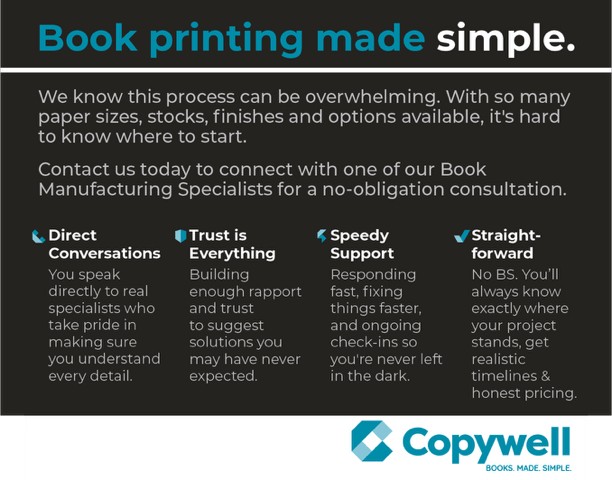3 Practices the Literary Scene Could Learn from Spoken Word Artists
By Natasha Ramoutar
When I was curating So Fresh: A Scarborough Reading, I desperately wanted to bring together two worlds that I deeply loved. First were the authors that I knew from the literary community. Authors like Catherine Hernandez and Carrianne Leung had represented our community in a full, ethical, and multivocal ways. Every time I read these stories, I felt moved. There is a special, full-bodied kind of love that emerges when you feel seen, one that radiates to every corner of your being.
That same surge of emotion first happened years ago at RISE. Founded by Randell Adjei, the weekly open mic in Scarborough is a place where you can go to be brought to tears or doubled over in laughter. It is a place that is marked by every snap, every stomp, and every “mhm” or “jheez.” It is a place that is alive with pride and joy. This was the kind of energy that I wanted to bring into So Fresh, even though it was rare to see the spoken word world and the literary world brought together. Aside from a handful of reading series and pop-up events, the two scenes didn’t run in the same circle.
While Catherine Hernandez and Carrianne Leung can bring that energy to a crowd, literary events aren’t always like that. Adrian De Leon’s article “The MFA Voice™” describes a familiar sound that I so desperately wanted to avoid: “Imagine uttering your lines through the back of a breathy fan. ...This half-guttural half-breathy performance, I quickly learned, was a sort of calling card for Toronto literary readings.”
As noted on Poetry Foundation, spoken word poetry is rooted in oral traditions and performance. It makes sense that there would be no “half-guttural half-breathy” delivery of work from this lineage. It is written for ear and often practiced repetitively until memorized. The more I attended spoken word events, the more I wanted to be able to perform like the spoken word artists. I did what any good student would do: studied my favourite poets and took notes!
Below are three things that I have learned from the spoken word scene that I hope you also find useful.
1. Edit your work for rhythm and cadence
Really excellent pieces written for the page don’t always translate to a smooth and captivating reading. While pieces I wrote would flow seamlessly when read in my head, sentences and lines would frequently trip me up while reading aloud. All it took was two misplaced sounds or a sentence that was one word too long to completely derail me.
It’s incredibly important to edit for the aural and oral ahead of an upcoming performance. For myself, I love marking up a physical copy of my work. On my first round, I eliminate any excess words that are tripping me up. I also update any lines that I want to sound more colloquial and natural to my voice. A good example of this is Yesika Salgado’s poem “Brown Girl.” Each phrase holds weight, is direct, and seamlessly melts into the next. On my second round, I look for lines I want to emphasize, where I might want to speed up or slow down, and where it would be effective to get louder or quieter. Joshua “Scribe” Watkis’ demonstrates this in his poem “The hate that killed Dr. King is not buried with him.” It begins at a slower pace, then speeds up over time to match the distress that builds in the piece. The poem also leaves space for certain lines to hang, giving the listener extra time to process the key moments.
Editing for aural and oral shouldn’t be completely new to literary authors depending on your studies and training. As an example, consider the fixed form of the sonnet, and the way that the iambic pentameter is meant to mimic a natural speaking pattern in the English language.
Your CanLit News
Subscribe to Open Book’s newsletter to get local book events, literary content, writing tips, and more in your inbox
2. Pinpoint the emotion behind your work
Each piece of writing that I produce has an emotional core. When reading, I always hope that I leave the audience with the essence of my piece. As mentioned earlier, spoken word artists at RISE had always left me feeling moved, and I have held that as my own standard.
When I am preparing for a reading, I ask myself a series of questions. First, what is the emotion that is driving this piece? What is prompting the speaker, narrator, or protagonist to act? This does not have to be limited to just one emotion since humans are complex creatures. Second, do I feel this emotion when I read the piece back to myself? Can I identify techniques or phrases that cause this? Identifying emotion is an abstract tactic with any written work. Deconstructing a poem, short story, or personal essay to find an emotional core can be complex, especially when most pieces are emotional rollercoasters. Techniques can range from metaphors to enjambment to imagery to overall tone.
Britta B’s poem “Dear Young Woman” is a minimalist, stripped down poem that tugged at my heartstrings. While inspiring and motivating are two adjectives that are overused in our wellness-obsessed world, those are the two emotions that stirred within me. One tactic that Britta B uses in this poem to drive home the motivation is repetition, with phrases like "I hope you find" and "I wish you" appearing again like a refrain. Another example is Safia Elhilo’s “Alien Suite,” which immediately conjured up feelings of longing and loneliness for me. The piece ruminates concepts of home and identity through a number of vivid images and definitions.
3. Get acquainted with the audience
As an introvert, I understand the temptation of wanting to read with your eyes glued to the page, never looking up. Reading in front of an audience was terrifying for me, but I noticed that connecting with the audience really enhanced the listening experience for them. Engaging the audience in direct ways with tactics like call and response or simply looking up to the room can make them feel valued and encourage them to actively listen.
In Viet Thanh Nguyen's article "How Not to Bore Your Audience at a Reading," he insists that a reader should make eye contact throughout the performance regularly. Mahlikah Awe:ri does this by expertly navigating the stage in her performance of “Labor,” connecting with every side of the audience. She moves throughout the space, filling the entirety of the room with her presence.
Viet Thanh Nguyen also describes the way a reader can leverage the speaker of the piece that they’re reading: “Construct a persona. You are putting on a show, whether it is for five people or fifty or five hundred.” In Noel Quiñones’ spoken word piece “Abuela Disciplines Dominican Drake,” he crafts a character that is boisterous and unapologetic, and interacts with Dominican Drake in a way that engages the audience. While this is a very literal example of being a performer and taking on a completely different persona, the energy that Quiñones brings to his piece is commonplace with all of his poems.
Although these are 3 practices from the spoken word scene that the literary scene could benefit from, that’s not to say that page poets, novelists, and memoirists haven’t tapped into it before. At a panel for Word on the Street in Toronto, Doyali Islam mentioned that she edits her poems for the ear and for emotional affect. Joshua Whitehead performed an entrancing set at the Festival of Literary Diversity, embodying his Indigiqueer Trickster character Zoa while reading from his poetry collection full-metal indigiqueer. And Catherine Hernandez, hailing from the theatre world, rouses audiences to tears or laughter with her emotive readings.
No matter which side of the writing world you come from, I hope these tactics motivate you to take up space at your next reading, and to be unapologetic while doing it. In the words of Britta B: "I wish you more."
The views expressed by Open Book columnists are those held by the authors and do not necessarily reflect the views of Open Book.
Natasha Ramoutar is an Indo-Guyanese writer by way of Scarborough (Ganatsekwyagon) at the east side of Toronto. Her work has been included in projects by Diaspora Dialogues, Scarborough Arts, and Nuit Blanche Toronto and has been published in The Unpublished City II, PRISM Magazine, Room Magazine, THIS Magazine and more. She is the Fiction Editor of FEEL WAYS, an anthology of Scarborough writing, and the Social Media Assistant at the Festival of Literary Diversity. Her first book of poetry Bittersweet will be published in 2020 by Mawenzi House.




